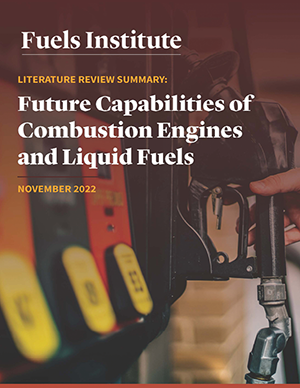
The U.S. transportation sector includes nearly 300 million internal combustion engine (ICE) vehicles, and American consumers were on pace to purchase another 14 million in 2022. Despite the rapid increase in electric vehicle sales, the market will continue to be dominated by ICE vehicles for decades to come. In the pursuit of reducing carbon emissions from the transportation sector, finding solutions for these vehicles must be a priority.

The Fuels Institute report “Future Capabilities of Combustion Engines and Liquid Fuels” presents a high-level summary of research and development projects focused on improving ICE efficiency and emissions and reducing the carbon intensity of liquid fuels. Understanding the objectives and potential benefits of such initiatives is important to better evaluate the potential emission contributions of the transportation sector.
Despite reports that work on ICE technology has ceased and that no additional improvements can be had, this study found thousands of current citations pertaining to research that could yield significant improvements in the performance and environmental footprint of these vehicles.
The report is a snapshot of what might be possible on the path to decarbonizing transportation. Decision-makers should seek viable solutions and support further progress in technology and fuel formulations to achieve a lower carbon future.